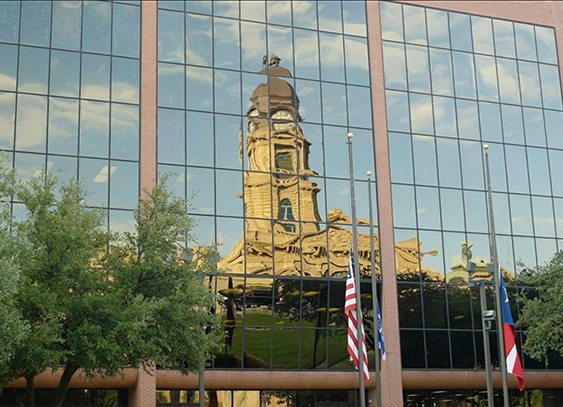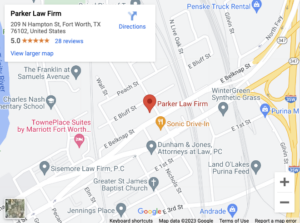What Happens to a Personal Injury Case When the Plaintiff Dies in Texas? Understanding Survival Actions and Wrongful Death Claims
When someone pursuing a personal injury claim passes away, the case does not simply disappear. Texas law provides two legal paths that ensure accountability continues: survival actions and wrongful death claims. Although both arise after the death of an injured person, they serve very different purposes. One continues the deceased’s claim, while the other seeks justice for the family left behind.
Understanding how these two legal mechanisms work is essential for families who suddenly find themselves managing both grief and legal responsibility.
Survival Actions: Continuing the Plaintiff’s Original Personal Injury Claim
A survival action preserves the lawsuit the injured person had before they died. Instead of ending, the claim “survives” through the estate, allowing the decedent’s representative to finish what the plaintiff began.
A survival action focuses on what the deceased personally endured between the time of injury and death.
What a Survival Action Can Recover
While the claim is controlled by the estate, it seeks damages that belonged to the deceased, such as:
- Medical expenses incurred before death
- Lost wages between injury and death
- Physical pain and mental anguish
- Property damage (when relevant)
These damages become assets of the estate. After debts are settled, the remainder is distributed through the will or Texas intestacy law.
Wrongful Death Claims: Compensation for the Family’s Personal Losses
A wrongful death claim is a new and separate lawsuit that arises only when the defendant’s negligence caused the death itself. It compensates the surviving family for their own suffering and hardships.
Who Can File a Wrongful Death Claim in Texas
Texas law is very strict about this. Only:
- The surviving spouse
- Children
- Parents
Others, including siblings, grandparents, or extended relatives, cannot file.
Survival Action vs. Wrongful Death: Key Differences
Although both claims may arise from the same event, they address different harms. Understanding the distinction becomes easier when viewed through two simple questions.
Whose harm is being compensated?
- Survival action: Harm to the deceased
- Wrongful death: Harm to the surviving family
Who controls the case?
- Survival action: Executor or estate representative
- Wrongful death: Spouse, children, or parents
These cases can be filed together when the defendant’s negligence caused the death. If the death is unrelated to the injury, for example, due to an unrelated illness ,only the survival action proceeds.
Procedural Steps After the Plaintiff Dies
When a plaintiff passes away, specific steps must be taken quickly to keep the lawsuit alive. These steps are procedural but extremely important.
Filing a Suggestion of Death
The court must be formally notified of the plaintiff’s death. In federal court, this triggers a 90-day deadline to substitute the correct party. While Texas state courts may allow more flexibility, failing to act can result in dismissal.
Substituting the Correct Legal Representative
Once the notice is filed, the estate’s representative must be substituted into the case. This is often the executor named in the will or an administrator appointed by the court. Without a proper substitution, the lawsuit cannot legally continue.
Opening the Estate
If an estate has not yet been established, the family must open one. This gives the representative legal authority to make decisions, approve settlements, and advance the case.
Understanding the Deadlines: Statutes of Limitations in Death-Related Claims
Time limits in these cases are strict. Confusing them or missing them can permanently end the right to recover damages.
Wrongful Death Statute of Limitations
A wrongful death claim must be filed within:
- Two years from the date of death
This deadline rarely extends, making timely action crucial.
Survival Action Deadlines
A survival action follows the timeline of the original personal injury claim, not the date of death. This means:
- The clock started running on the date of the original injury, and
- The estate inherits whatever time remains
Texas law does allow a 12-month tolling period if the plaintiff dies before their claim expires, giving the estate time to organize.
Damages in Death-Related Personal Injury Cases
The type of damages available depends entirely on the type of claim being pursued.
Damages Available in a Survival Action
These damages reflect what the deceased experienced before death:
Pre-Death Medical Bills
These damages cover the medical treatment the deceased received between the time of injury and their death. This may include hospitalization, surgeries, medications, rehabilitation, and any other healthcare costs directly related to the incident.
Lost Income Before Death
If the injury prevented the person from working before they passed away, the estate can recover the wages they would have earned during that period. This ensures compensation for the financial disruption caused by the defendant’s negligence.
Physical Pain and Suffering
A survival action allows the estate to seek compensation for the physical pain the decedent consciously experienced before death. Documentation such as medical records, testimony, or expert evaluations helps establish the level of suffering endured.
Mental Anguish
Emotional distress, fear, anxiety, and psychological trauma the deceased experienced prior to death are also compensable. These damages acknowledge that the harm was not only physical but also emotionally devastating.
No Recovery for Future Damages
Future medical expenses, future lost earnings, or future pain and suffering cannot be recovered in a survival action because the individual is no longer alive to experience them. The claim focuses solely on what happened from the moment of injury until the moment of death.
Future damages cannot be recovered because the decedent is no longer alive to experience them.
How Death Impacts Settlement Value
The plaintiff’s death often changes how the insurance company approaches the case. When future damages are removed from the equation, insurers often seek to reduce the claim’s value.
A strong legal team counters this by presenting clear evidence of:
- The decedent’s pre-death suffering
- Their medical treatment
- Testimony from family members
- Expert medical and economic analysis
This ensures the full value of the case is preserved and the decedent’s experience is not minimized.
Choosing the Right Executor or Representative
Communicating With Attorneys
The personal representative becomes the primary point of contact for the legal team. They must stay informed, respond promptly to requests, and provide documents or information needed to keep the case moving. Effective communication ensures the attorney can build a strong and timely claim.
Approving Settlements
No settlement can be finalized without the representative’s approval. This person must evaluate offers, understand the legal and financial implications, and make decisions that reflect the best interests of the estate,not personal preference or convenience.
Making Strategic Decisions
Throughout the case, the representative may need to decide whether to pursue mediation, authorize expert involvement, or proceed toward trial. These decisions require careful judgment and an understanding of how each choice affects the outcome of the lawsuit.
Protecting the Estate’s Interests
The representative is a fiduciary, meaning they are legally obligated to protect the estate’s assets. This includes safeguarding the value of the personal injury claim, preventing unnecessary delays, and ensuring any recovery is handled according to Texas estate law.
Keeping the Case on Track
Lawsuits have strict deadlines, especially after a plaintiff’s death. The representative must ensure all procedural requirements, such as substitutions, estate administration, and filing deadlines, are met on time. Missing even one date can jeopardize the entire claim.
Common Defenses in Death-Related Personal Injury Cases
Defendants and insurance companies often argue:
- The injury was not caused by the defendant
- The deceased was partially at fault
- Medical treatment was unnecessary
- Pain and suffering were exaggerated
Overcoming these defenses requires:
- Medical documentation
- Accident reconstruction
- Witness statements
- Expert testimony
A well-prepared case ensures the deceased’s story is told accurately and powerfully.
Final Thoughts
Losing a loved one is devastating, and navigating the aftermath of an unfinished personal injury case can feel overwhelming. Whether the appropriate path is a survival action, a wrongful death claim, or both, Texas law provides a way to continue pursuing justice.
Families do not have to face this transition alone. With the proper legal guidance, the legacy of the person who passed away can be honored, protected, and carried forward to its rightful conclusion.
FAQs
1. What happens to a personal injury case if the plaintiff dies in Texas?
If the plaintiff dies, the lawsuit does not automatically end. Instead, the claim may continue through a survival action, allowing the estate to pursue damages the deceased suffered before death. If the defendant’s negligence caused the death, the family may also pursue a wrongful death claim for their own losses.
2. Who can file a survival action in Texas?
Only the decedent’s estate can file or continue a survival action. This must be done by the executor named in the will or a court-appointed administrator if there is no will. The recovery becomes an asset of the estate and is distributed through the estate process.
3. Who can file a wrongful death claim in Texas?
Texas law allows only three categories of people to file a wrongful death claim:
- The surviving spouse
- The children
- The parents
Other relatives, including siblings or grandparents, cannot file.
4. What damages can be recovered in a survival action vs. a wrongful death claim?
A survival action recovers damages the deceased suffered before death, such as medical bills, lost wages, and pain and suffering.
A wrongful death claim compensates the family for their own losses, including mental anguish, loss of financial support, loss of companionship, and loss of inheritance.


